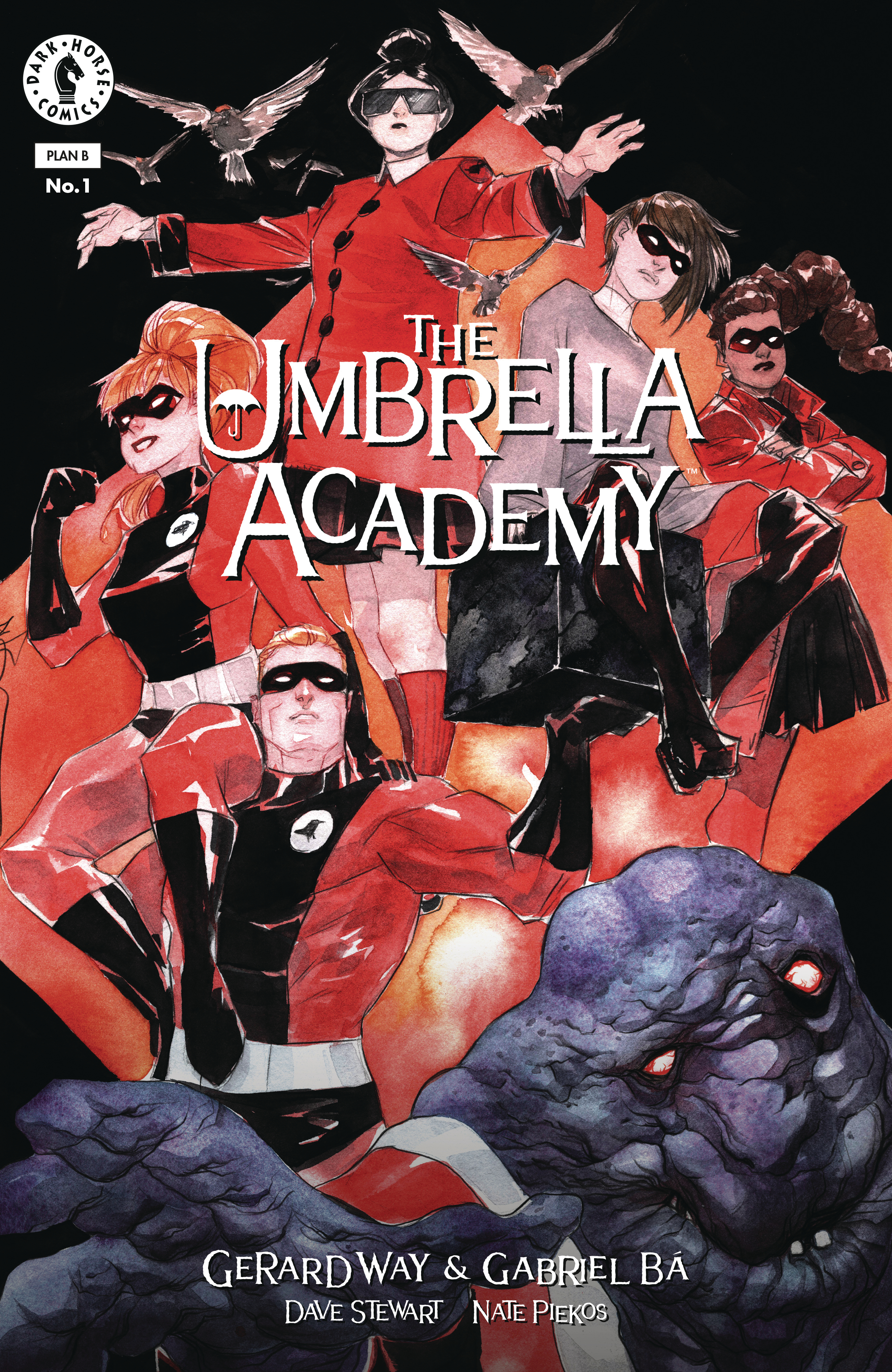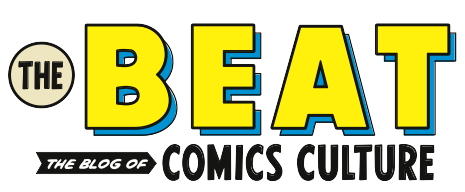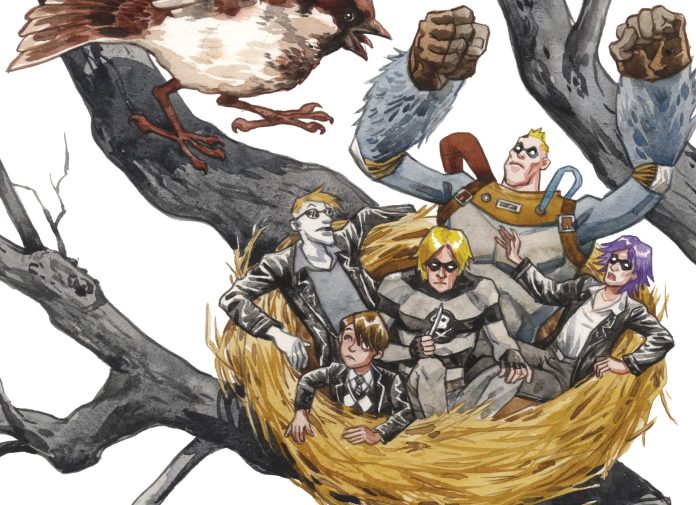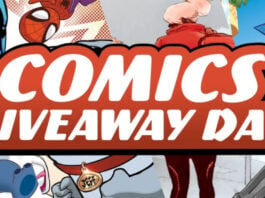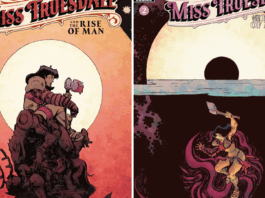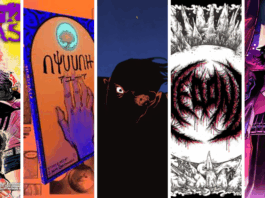The Umbrella Academy, the cult classic oddball superhero comic, finally returns this year with the brand new story arc Plan B, its first in nearly six years. Written by My Chemical Romance singer and mastermind of DC Comic‘ Young Animal Imprint Gerard Way, and illustrated by award-winning artist of Daytripper, Gabriel Bá, it’s essential comics reading for any fans of unconventional, dark and funny comics. Plan B is just as good, delivering one of the series most topical arcs as it moves into exploring some of its worldbuilding in more depth. For the very first time, illustrator Gabriel Bá contributed to the writing of the series – as such, we at The Beat decided to reach out and discuss the triumphant return of one of the best comics on the shelves.
This interview has been edited for clarity.
JARED BIRD: Hi Gabriel, thank you so much for your time. Given that Plan B is the first arc of The Umbrella Academy since the TV series concluded, as well as the first story arc in six years, did you feel any pressure going into this project?
GABRIEL BÁ: It’s a joy returning to the world of The Umbrella Academy after so long. So much has happened since we finished Hotel Oblivion and the time away helped us to get a clearer view of our story and how to move forward with it. We actually have been working on this new arc for the past 5 years, with enough time not to rush any decisions and without the pressure of catching up with the TV series. The TV series brought a lot of interest into these characters and a bunch of new eyes to our comic. It’s fun how they realize the comic book is different from the series, like they’re discovering the characters and the story for the first time. In a way, they actually are.
BIRD: Something I love about the series is how distinct any given story arc of it feels. How would you summarize the tone and atmosphere of Plan B?
BÁ: I believe we spent the first 3 arcs building the world of our story and now it’s time to get deeper and push it forward. We opened lots of doors over the years and now we’re walking into some of them, while leaving some closed to keep the readers curious, because that’s the fun part. The odd and bizarre elements are still present, but the characters are dealing with more serious matters about their lives.
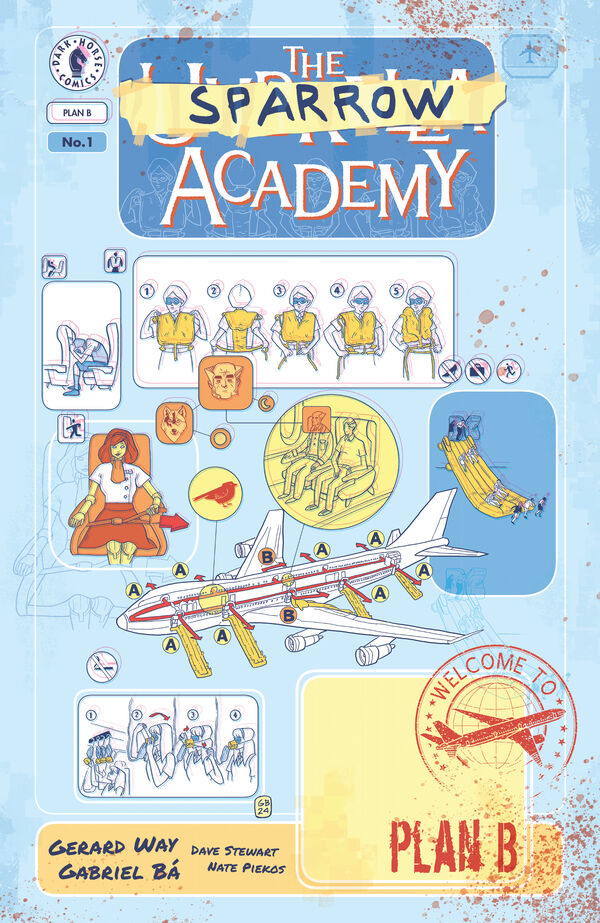
BIRD: How did you ensure that the Sparrow Academy both resembled their Umbrella Academy counterparts and remained distinct from them at the same time?
BÁ: The Sparrows are a different team altogether, still following the number dynamic, but not mirroring the personalities of the Umbrella Academy. We have similar archetypes, like the leader being the strong one, but the powers of the Sparrows are pretty distinct, also as a way to neutralize the powers of the Umbrella Academy. The fun part is to come up with strange and bizarre powers and put them into action to see what happens.
BIRD: This is your first time as co-writer of Umbrella Academy. How did that change your creative process for the series?
BÁ: From the very first page of the first series, I really loved the way the story was written. The rhythm, the pace, the storytelling side of it had that fun, classic superhero style that I loved reading growing up. At the same time, it was weird and strange, filled with characters dealing with deep feelings. Gerard and I worked on three major stories with these characters, but we have talked about the entire story over the years, all the wild ideas he had in his mind. On the previous arcs, I’ve only given suggestions on the story as it appeared on the page, but we felt that this time I could work on the writing side from the bottom up, helping to steer the story where we wanted it to go. I used to have a more passive role, even if I had to create a lot of stuff visually. Now I feel the bar is higher, because writing is the most difficult part of the job – and the most important too.
BIRD: Plan B’s major themes feel incredibly timely, particularly the suppression of personal freedoms in exchange for ‘the greater good’. Were you and Gerard Way intentionally trying to comment on the state of the world?
BÁ: There are a lot of family related themes that have resonated with readers over the years, and it’s one of the strongest features of our comic and a favorite of mine, but when you tell a story with superheroes, you are telling a story about power – how power can change the world at the same time that it may destroy it. How it can save people, but also how it can corrupt them. These are subjects that we have seen repeatedly throughout history, unfortunately. The fact that the world is as it is today just heightens everyone’s sensibility for these matters, but our story should still speak to future readers, who will have a different look at it, hopefully.
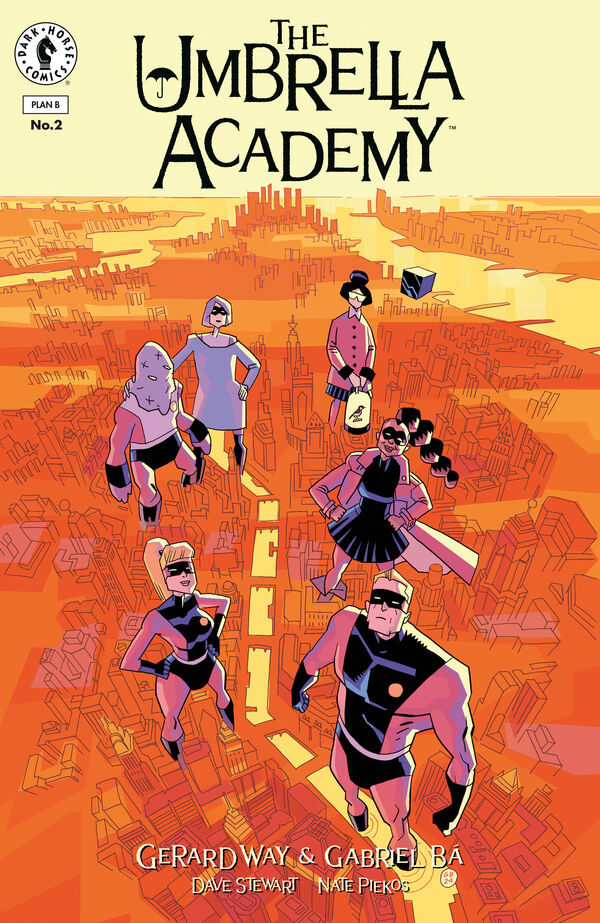
BIRD: In a previous interview with The Beat, you called Space Boy your favorite character to draw in the series, whilst Rumor was your least favorite. Has that opinion changed since?
BÁ: What drives my pleasure to draw has always been the story. In the beginning of the series, Spaceboy was the leader of the team, our most archetypical super-hero, and that was a lot of fun to work with. Alongside his heroic personality, he has this amazing, massive body to play with as well. Rumor has one of the most interesting powers of them all, but it’s very subtle, which is great for writing the character, but it doesn’t give a lot of material to draw. It’s mostly in the dialogues. Those are basically the reasons for why I liked one over the other back then.
Now that I’m also writing the story, I feel like Rumor’s conflicts are amazing to work with and that makes her much more interesting. Also, now I can basically write everything I like to draw, which is the fun cheating hack a cartoonist can do when writing and drawing the story.
BIRD: What do you think continues to draw readers to the series, nearly two decades since it began?
BÁ: I think it’s the fact that all the characters have flaws; none of them are perfect. Our story is not about saving the world, it’s about overcoming your problems and accepting each other as they are. They can beat some villains and make some weird fun stuff along the ride.

BIRD: There’s been a lot of attention on Brazilian fiction recently following the success of I’m Still Here. Are there any Brazilian comics you would recommend to readers?
BÁ: Brazil has a great comics scene and it has been expanding and becoming really diverse over the years, but it’s hard to find works that have been translated. Nonetheless, there’s an incredible graphic novel published last year called Where Is The Self-Esteem Born? (Onde Nasce a Auto-Estima?) by Regiane Braz and Jefferson Costa, a powerful autobiographical story about pain and identity. I really hope it gets translated and published abroad in as many languages as it can.
I also recently read another graphic novel called Like a Stone (Como Pedra), by Luckas Iohanathan, nominated for the Fauve d’Or at the 2025 Festival de la Bande Dessinée d’Angoulême. Last but not least, I can’t recommend enough people to read Angola Janga, by Marcelo D’Salete, published in the U.S. by Fantagraphics, by far one of the most important works of Brazilian comics in the past decades. Fantagraphics has also published an anthology of Brazilian creators, Braba, that has a great variety of new voices.
BIRD: Thank you so much for your time.
